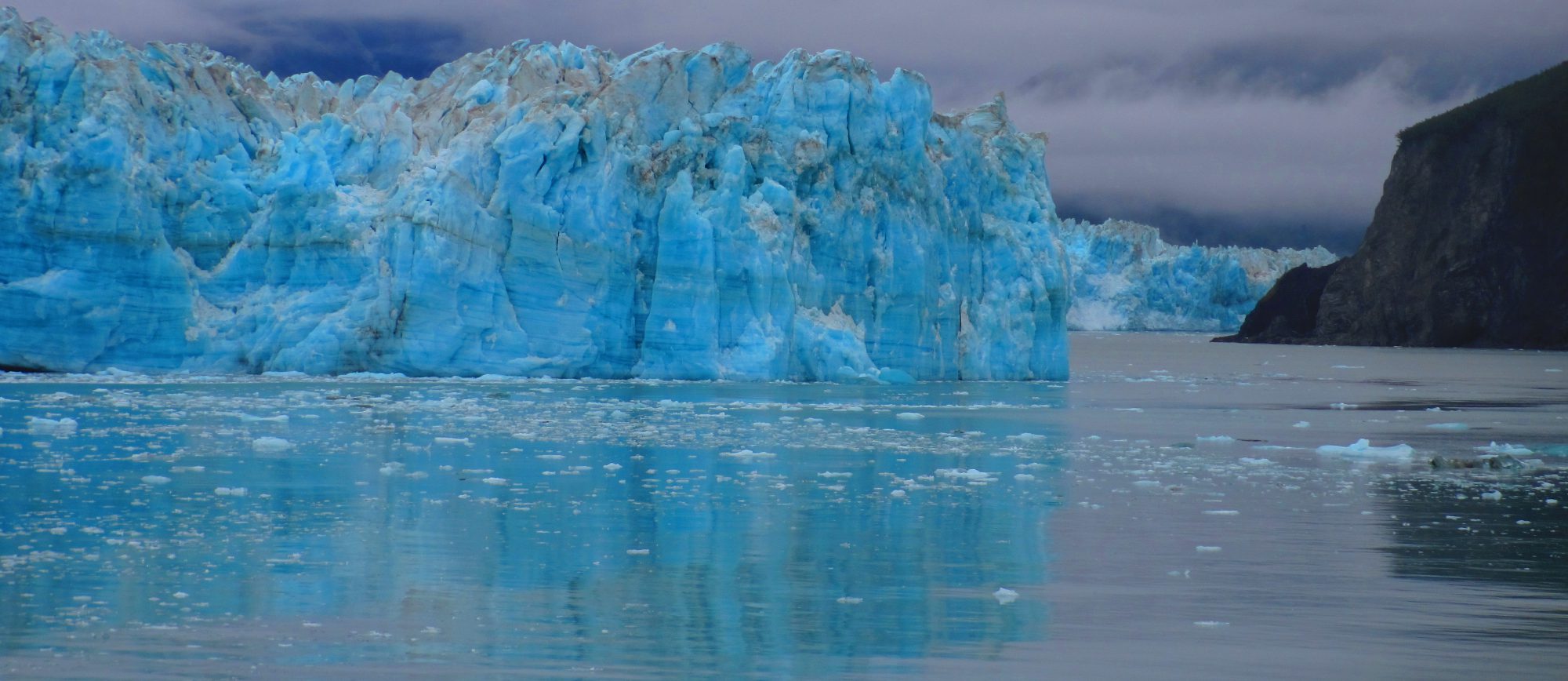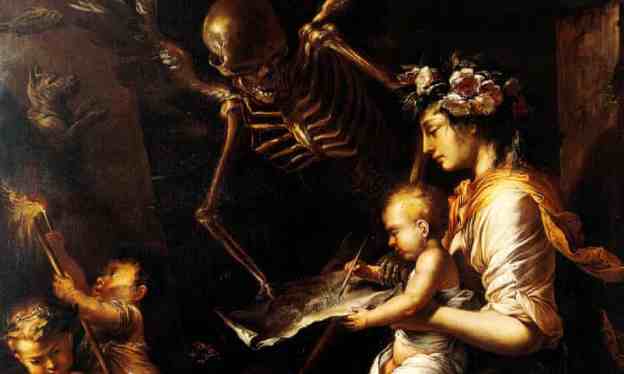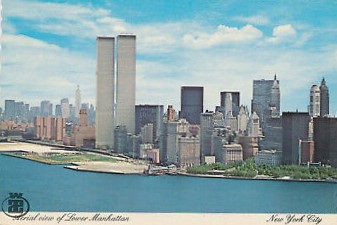Over the past couple years of this pandemic, it has been breathtaking to see the depth of the rabbit hole so many have fallen into. And that many of them purport to be on the left is both fascinating and terrifying. For far too many people, masks requirements, vaccine mandates or any kind of public health measure is looked at solely through the lens of conspiracy. To them, anything that might come from government or “Big Pharma” is to be distrusted or discounted. A virus that continues to bring healthcare systems to their knees and send millions to their premature deaths is still being referred to as a hoax or the flu. And despite decades of documentation on the effectiveness of eradicating or controlling deadly diseases through vaccines, there is a persistent paranoia when it comes to medical advances and science. It is worth examining what led us to this point in history.
That so many are willing to take the word of any contrarian rather than that of peer reviewed science is astonishing. But after decades of government and corporate malfeasance and abuses, it isn’t too difficult to understand the roots for this skepticism. Indeed, government agencies and business institutions have constructed this atmosphere of distrust. Just one look at the CIA, the military, or the tobacco and fossil fuel industries and we get a litany of lies, crimes, and the obfuscation of those crimes. Indeed, most drug companies have gotten away with the many crimes they have committed, with the recent opioid scandal and the Sackler family coming to mind. But there is also a kind of collective fear and a legacy of anti-scientific credulity that is common in far-right political circles that goes beyond justified criticism of and opposition to the crimes of the powerful.
None of this is especially original. Climate change deniers have long latched on to the proclamations of a small, but loud, group of scientists who confirm their narrative. A major part of this is thanks to a well funded campaign of disinformation by the fossil fuel industry who began lying to the public about the damaging effects of burning fossil fuels decades ago. And there are dozens of think tanks in Washington whose sole purpose it to peddle corporate propaganda to politicians on the dole and a public that is already inclined to be against any scientific warning that may alter the Western lifestyle. But there is also a conspiratorial way of thinking about these things. The very real and existential issue of climate catastrophe has been linked to crackpot theories about a tyrannical “one world government.” Those who have been alienated from society often become targets for this kind of delusion. And social media amplifies it all through echo chambers of confirmation bias, connecting the alienated with one another, albeit in a very superficial manner.
When it comes to the pandemic, the people who may be termed “vaccine hesitant” are not necessarily in the same camp as anti-vaxxers, the latter being a more militant subset of modern society who rely largely on the spurious claims of outliers in the scientific community or public figures like Robert F. Kennedy. The vaccine hesitant may be so due to a horrifying legacy of racist experimentation on people of colour or who have been persuaded by disinformation campaigns to distrust the efficacy and safety of the current Covid-19 vaccines. This population appears at least willing to consider the science and rational arguments in favour of taking the vaccines. Anti-vaxxers are not. And like the QAnon cult, few of them seem to possess the capacity to think about this critically.
There is an overarching theme amongst many anti-vaxxers that can be seen in many other conspiratorial trends. A common belief is that the world is dominated by a powerful, shadowy and evil group of people with an intent to enslave, harm or even eradicate large segments of the population. To many this may sound ridiculous. But it is often easier to look at the world in black and white, good vs. evil, than to face its complexity or the fact that no one is really in control. This is not to say that powerful people do not engage in crimes against humanity or the living biosphere on which we all depend. On the contrary, and I have written extensively about them. But there is a difference here that I will try to explain.
As the late Ursula Le Guin said, “we live in capitalism.” So, while most of us are simply trying to navigate our way through this deeply corrupt, oppressive and unfair arrangement of economic and political power, some are taking advantage of it for personal gain, and are in a position to do so. These people can appear as though they are all powerful, when in reality they just have more access to power and privilege based on status or money. And when one considers the conditions of modern life, in many ways it is easy to understand how so many people can become ensnared in conspiratorial thinking. The times we live in can be demoralizing for so many. Long, tedious work hours with little financial reward or time off. Inadequate or no healthcare. No paid time off. Loss of political agency. Mounting debt. All of this is overwhelming.
Undoubtedly, social media only adds to the confusion by creating an artificial bubble where all manner of reality is possible. Watch some Youtube videos and you become immersed in this bizarre world of secrets, mysteries and “hidden agendas,” that can never be truly understood. Behind one door there are a thousand others. This is what conspiracy thinking is. A labyrinth that is ultimately a dead end. Often this takes on a supernatural tone, as is the case in the QAnon cult. There are no accidents, ineptitude or unintended consequences. It is a puzzle that can never really be solved because the villains in these storylines somehow always stay just one step ahead of justice. And that is the point. It is meant to be continuous.
There is an unmistakable racism to much of this, beginning with Trump’s “China virus” comments and culminating in conspiracy theories about Wuhan and attacks on Asians in the West. And there is no doubt that much of it has an antisemitic tone: the “bankers,” the “Rothschilds,” the “globalists.” These shadowy figures play an important role in far-right pedagogy because they serve as necessary mechanisms for otherizing and scapegoating certain groups.
Of course, none of this is about the real crime of conspiracy. People, powerful and not, often conspire to do harm for personal gain. But conspiratorial thinking is a way of simplifying most problems in the world into something deliberately done or planned by an evil entity, in almost total secrecy, with near absolute power. And despite their sinister plans being widely revealed and discussed among the conspiratorial thinkers on such public forums as Facebook and Youtube, they are somehow able to get away with it all due to a supposedly sheepish and gullible public.
In truth, the pandemic hasn’t created anything new in the way humans organize themselves. On the contrary, it has revealed the tremendous failings and fissures in the current arrangement we live and labour under. And the anti-vax movement was born of a betrayal of public trust that arrangement. How could anyone expect a capitalist system to respond in any humane way to a global pandemic when it cannot even mitigate the worst effects of climate change or ecological destruction? How can anyone expect it to garner trust from the public when it has betrayed that trust over and over again, and then lied about it?
The stark truth is that the dominant capitalist system of the world today has addressed this latest catastrophe in the only way it knows how. It has implemented public health measures, but not without throwing tons of money toward corporations while shafting the working class, including front line workers. It has created vaccines, but not without remaining true to its mandate of capital accumulation for the ruling classes, which means barbaric patent laws that pad the pockets of corrupt pharmaceutical executives while adversely impacting the global south, most of which has yet to see even the first dose of the vaccine. Lockdowns without universal basic income, rent control or social safety nets. Vaccine mandates without public transparency and access to universal healthcare. All of this has facilitated the rise of the anti-mask, anti-lockdown and anti-vax movements.
On the left, we need to do a better job at understanding the economic and political conditions, disenfranchisement and alienation that gave rise to the spread of far-right conspiracies. We need to look at the long legacy of betrayal by government, military and corporate entities that has encouraged anti-science attitudes and cynicism to grow so easily throughout society. We need to learn from public health systems that do not put profit first, like Cuba and Vietnam. We cannot let corporations or governments off the hook for their crimes. And we need to continue the hard work of building solidarity, the ironclad law of the left, spreading the message that a better world is indeed possible without the predation of capitalism. But we need to push back against those who spread misinformation, even if we are accused of being “gatekeepers,” and especially when it has such an adverse impact on the working poor, people of colour, and the marginalized of the world. That last part is the most difficult of all, but unless we do that, everything else we do will be useless.
Kenn Orphan September 2021
*Painting is Sepulchral darkness- Humana Fragilitas (Human Frailty), c1657, by Salvator Rosa. Photograph: DEA/A. DAGLI ORTI/Getty Images/DeAgostini
As an independent writer and artist Kenn Orphan depends on donations and commissions. If you would like to support his work and this blog you can do so via PayPal. Simply click here: DONATE
And thank you for your support and appreciation!


